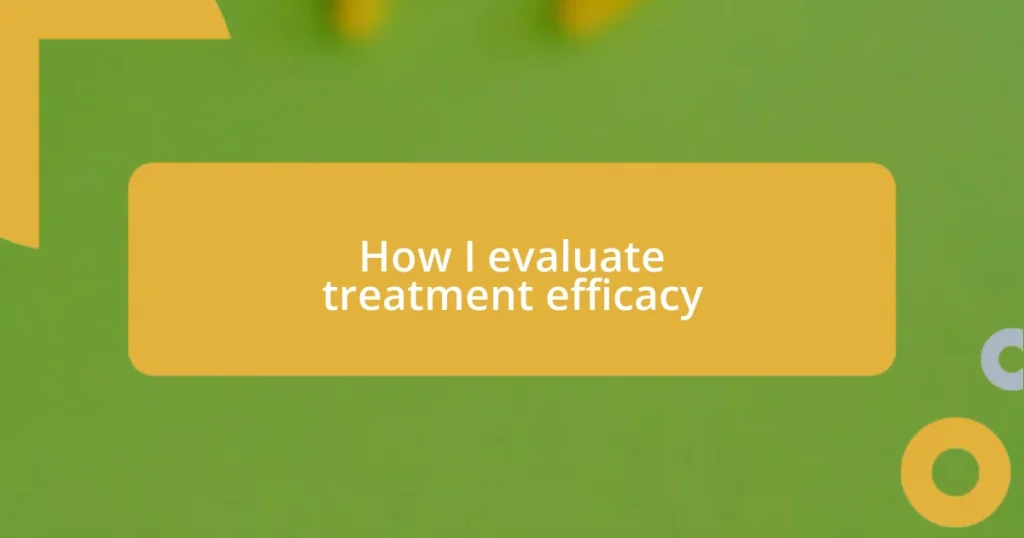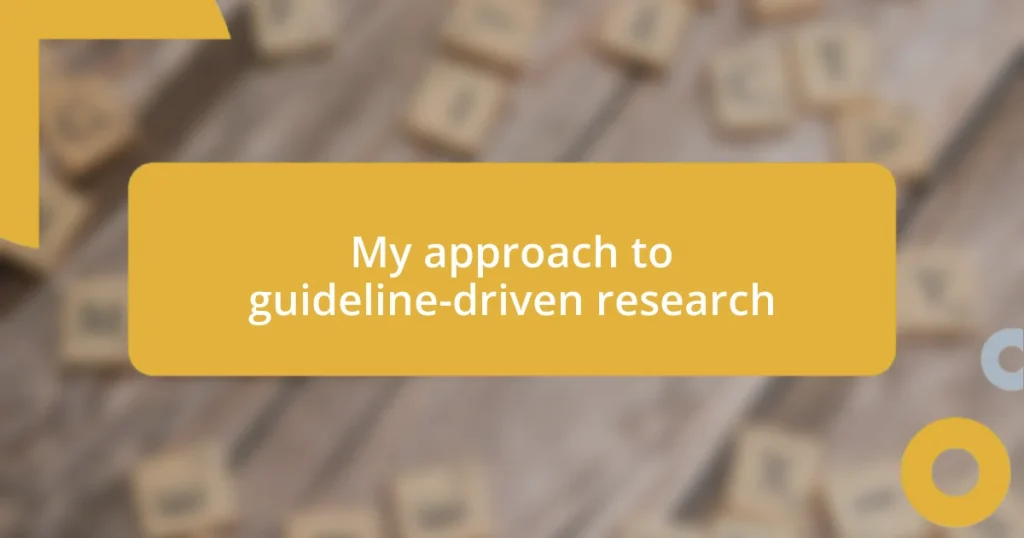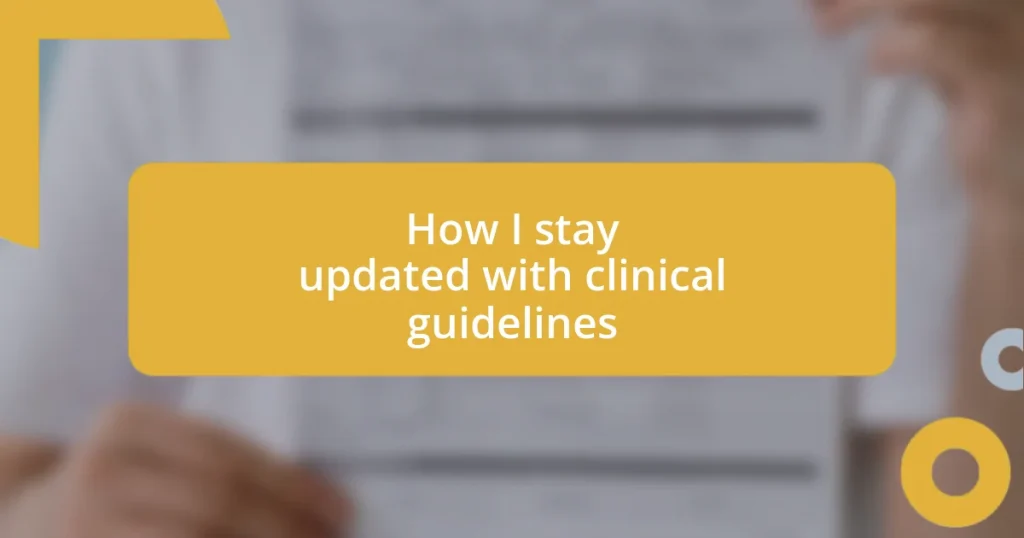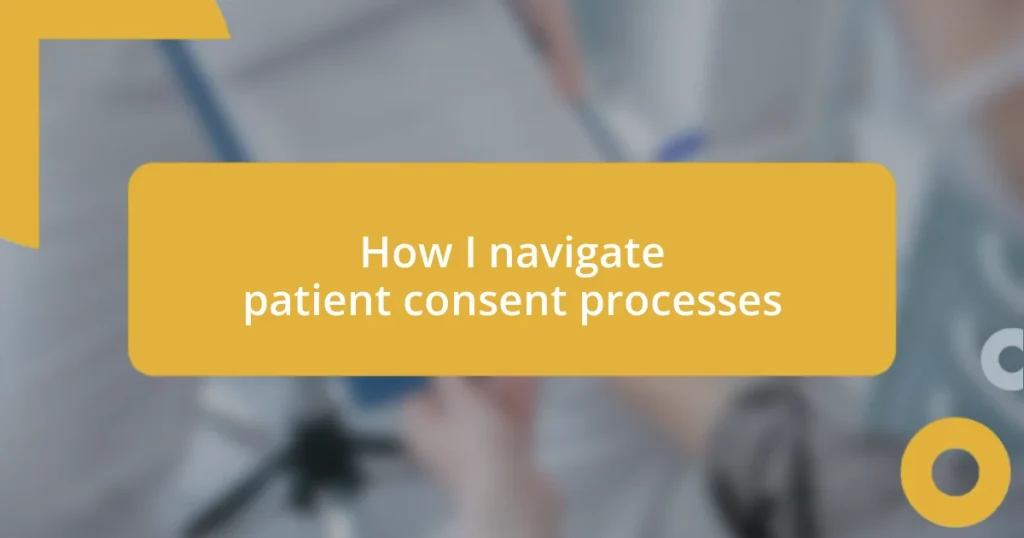Key takeaways:
- Treatment efficacy is subjective and varies between individuals, requiring a patient-centered approach that considers emotional and social impacts alongside clinical outcomes.
- Key metrics for evaluating treatment efficacy include patient-reported outcomes, side effects, and adherence rates, emphasizing the importance of quality of life and real-world experiences.
- Integrating statistical methods with qualitative data enhances understanding of treatment efficacy, allowing for personalized strategies and continuous improvement in care.
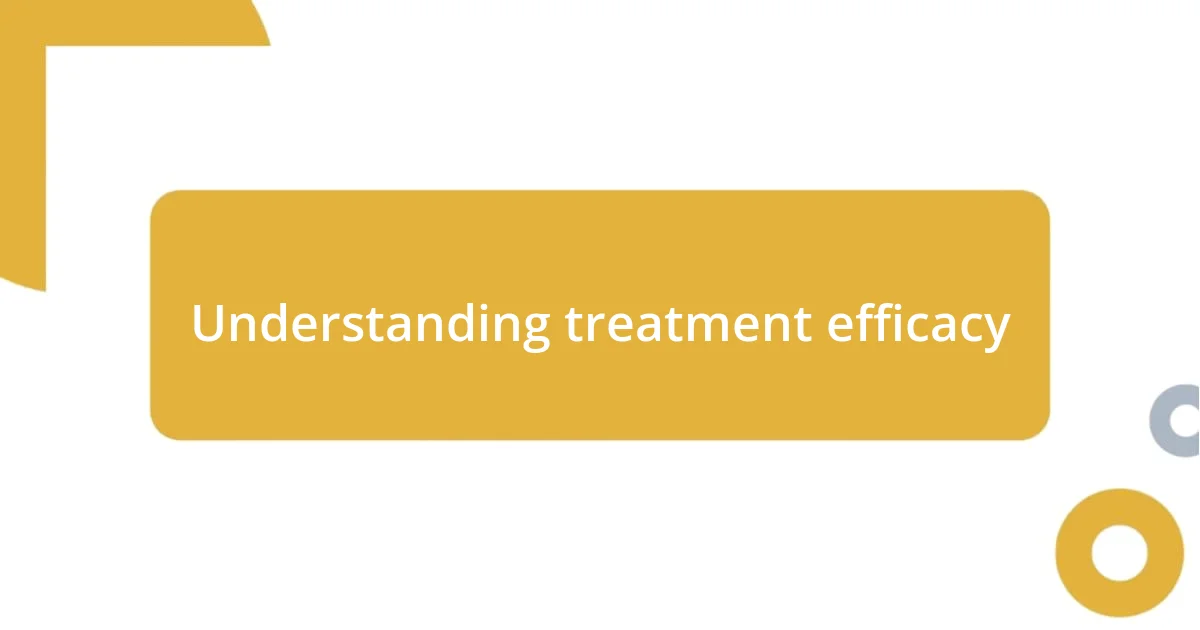
Understanding treatment efficacy
Understanding treatment efficacy is crucial for both patients and healthcare professionals. It refers to how well a treatment works in real-world scenarios, beyond just clinical trials. I remember a time when I witnessed a friend struggle through a treatment that looked promising on paper, yet their experience was disheartening. It made me realize how subjective efficacy can be; what works wonders for one person might not yield the same results for another.
When assessing treatment efficacy, I often ask myself, “What does success truly look like?” It goes beyond symptom reduction; it’s about enhancing quality of life. For example, I once engaged in a conversation with a patient who, despite feeling physically better, found that their treatment had drastically impacted their mood and relationships. This insight taught me that evaluating treatment isn’t just about clinical outcomes; it also involves understanding the emotional and social dimensions of healing.
Each treatment presents its own set of variables, from individual responses to side effects. This complexity makes it essential to adopt a patient-centered approach. I’ve seen healthcare providers who connect with their patients and genuinely listen to their experiences often gather richer insights into what efficacy means for each individual. This perspective has changed how I view treatment assessments, emphasizing that efficacy is not a one-size-fits-all measure.
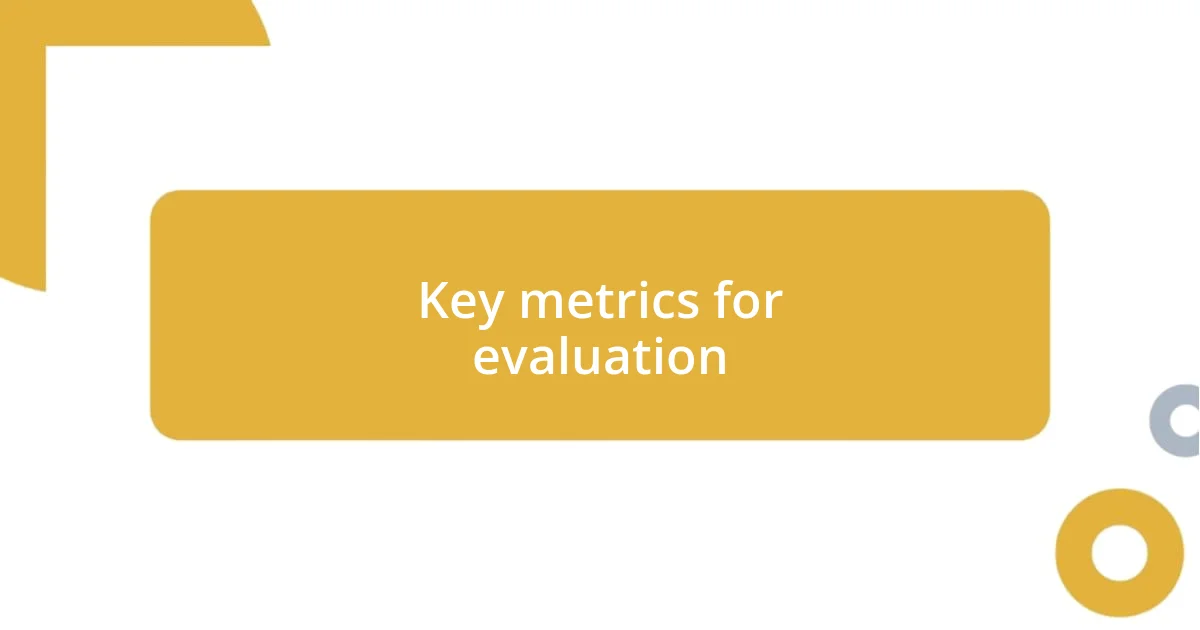
Key metrics for evaluation
When evaluating the efficacy of treatments, specific metrics offer crucial insights. I find that patient-reported outcomes (PROs) are especially revealing. These first-hand accounts of how treatments affect daily life capture nuances that clinical data often miss. For instance, I recall working with a patient who shared that, while their pain levels decreased, they still faced emotional hurdles. This comment highlighted the importance of integrating mental health metrics alongside physical symptoms.
Another key metric I utilize is the rate of side effects experienced by patients. It’s fascinating how a treatment can be effective yet come with a burden of side effects that significantly diminish overall well-being. I once met someone whose treatment worked wonders for their main condition but left them feeling constantly fatigued. Balancing efficacy and tolerability becomes an essential aspect of treatment evaluation, as patients often prioritize quality of life over merely getting symptom relief.
Lastly, I always consider adherence rates, as these reflect how likely patients are to stick with a regimen. Engaging with patients about their routines gives me a clearer picture of what’s working and what isn’t. I remember a session where a patient opened up about their struggle to keep up with a complex treatment plan due to overwhelming side effects. It emphasized that even with effective treatments on paper, real-world adherence is a vital metric that cannot be overlooked.
| Key Metric | Description |
|---|---|
| Patient-Reported Outcomes (PROs) | First-hand accounts capturing daily life impacts |
| Rate of Side Effects | Measure of tolerability and burden on well-being |
| Adherence Rates | Percentage of patients maintaining treatment regimens |
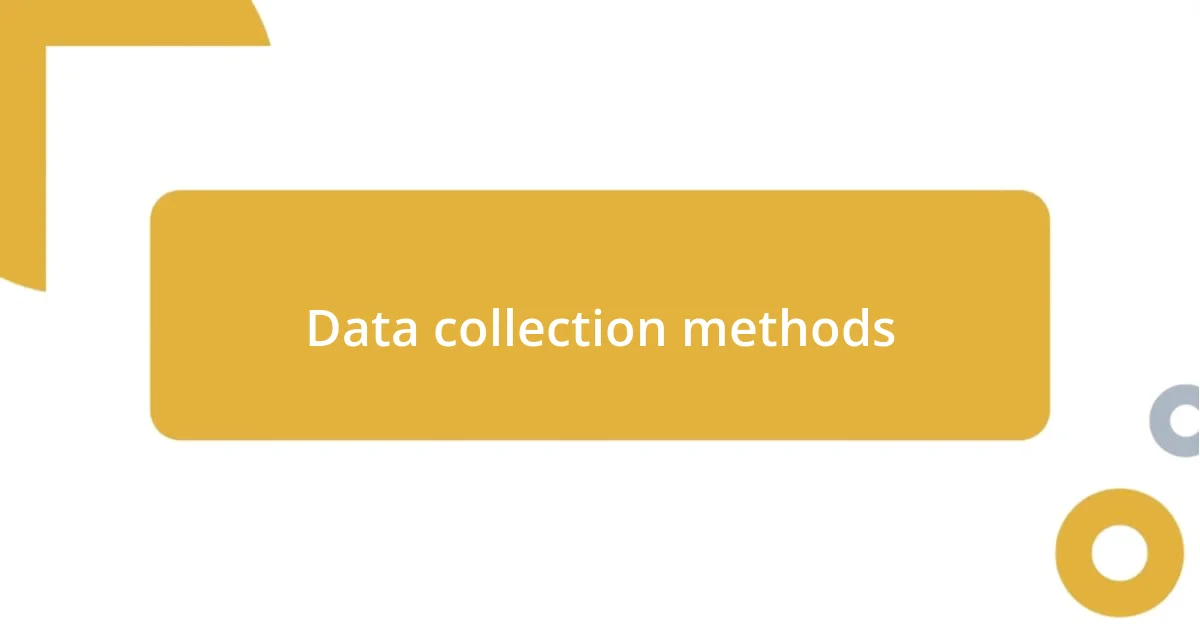
Data collection methods
Data collection methods play a vital role in accurately assessing treatment efficacy. I’ve found that a mix of qualitative and quantitative approaches often yields the best insights. For instance, I once participated in focus groups where patients shared their experiences openly. The emotions conveyed in their stories added a layer of depth to the numerical data we collected through surveys. This combination allows for a holistic view of treatment impact, making it easier to identify trends and individual differences.
When gathering data, consider these essential methods:
- Surveys and Questionnaires: Standardized tools that capture specific metrics efficiently.
- Interviews: One-on-one conversations where patients reveal personal stories and insights that numbers can’t capture.
- Focus Groups: Interactive discussions that encourage patients to share their experiences collaboratively.
- Observational Data: Monitoring patient responses in real-time during treatment to gather contextual information.
- Digital Health Apps: Utilizing technology to track symptoms and side effects over time, providing continuous insights.
In my experience, integrating these methods can significantly enrich the understanding of treatment efficacy. For example, I recall a project where we employed a digital health app alongside weekly interviews. The app revealed patterns in medication adherence, while the interviews surfaced emotional barriers patients faced, ultimately guiding us to adapt the treatment plans more effectively. This blend of data collection methods isn’t just about numbers; it reflects the voices behind the statistics.
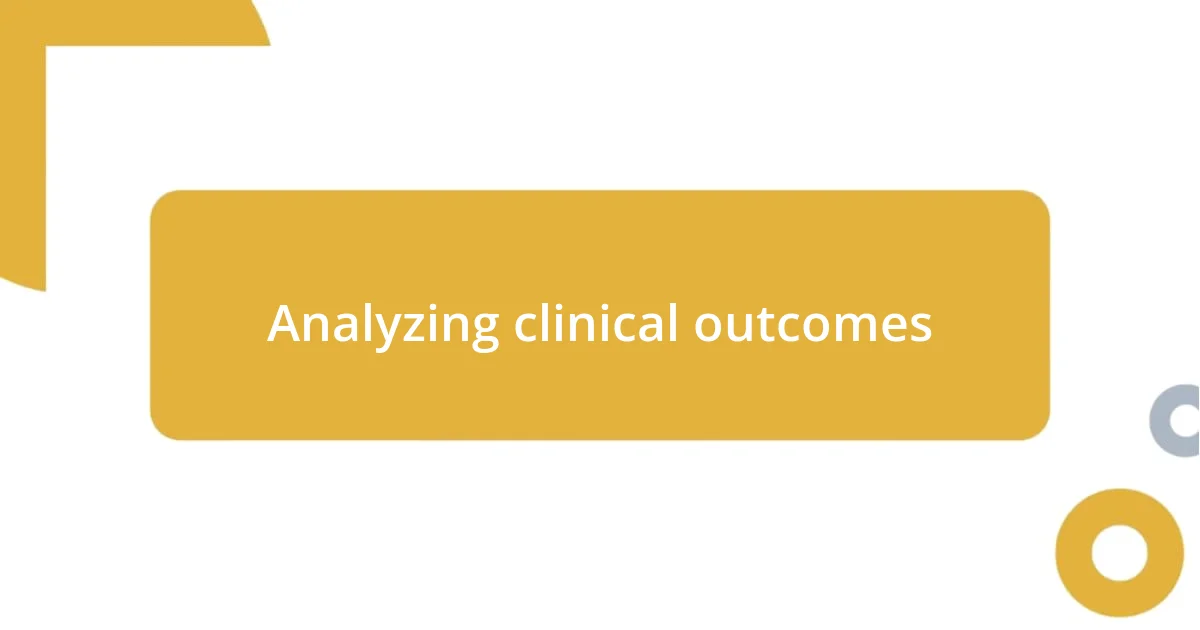
Analyzing clinical outcomes
Analyzing clinical outcomes often involves looking at data through a multifaceted lens. I remember reviewing a treatment’s effectiveness for a chronic condition, where the clinical measurements told one story, but the patient narratives told another. For example, while the clinical data showed significant improvement in symptoms, many patients reported that the rigidity of the treatment schedule caused additional stress, impacting their quality of life. Have you ever noticed how numbers alone can sometimes miss the heart of the matter?
Another important element is observing long-term outcomes. I recall a patient who initially thrived on a new medication, only to see their condition fluctuate severely months later. This made me question the short-term success often highlighted in clinical trials. The dynamics of how a treatment performs over time can reveal issues that require adjustments to achieve sustained efficacy. It’s essential to account for how patients feel not just in the first few weeks, but throughout their entire treatment journey.
Furthermore, I often reflect on how different demographics respond to treatments. I once analyzed outcomes from a diverse patient group and was struck by the variance in responses based on age, background, and even lifestyle factors. This not only underscored the importance of personalized medicine but also led me to consider how we can tailor treatments to meet diverse needs. Have you seen how one-size-fits-all approaches can fall short in real-world scenarios? Exploring these nuances really enriches the understanding of clinical outcomes and informs better treatment strategies.
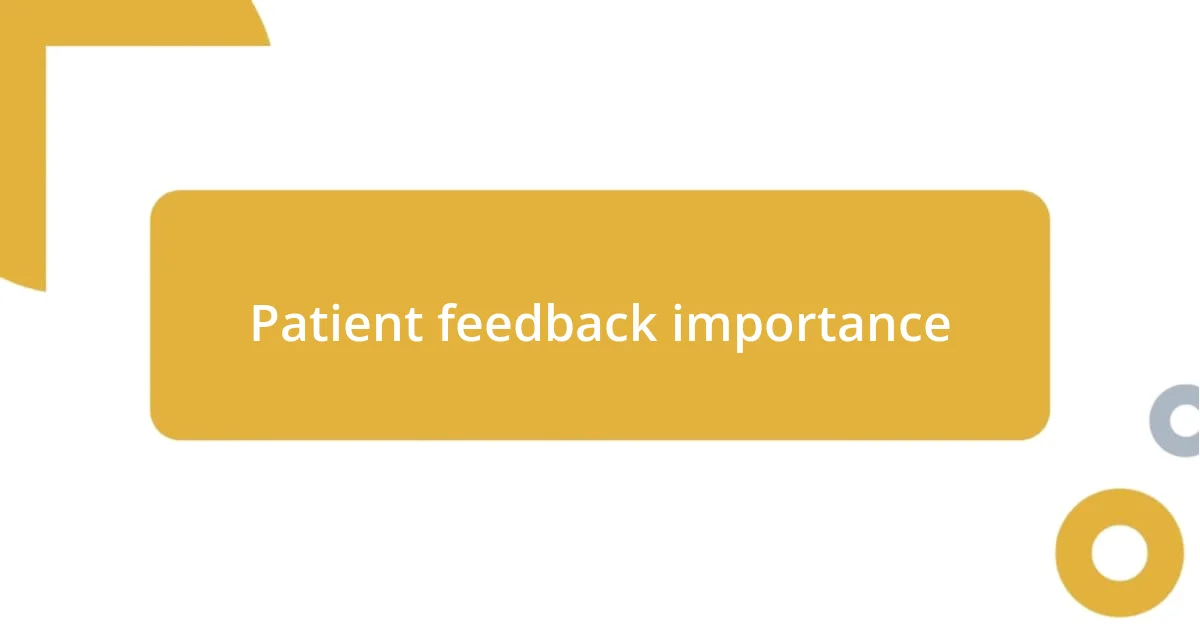
Patient feedback importance
Understanding the importance of patient feedback is invaluable. I remember a time when I was part of a project that heavily relied on feedback from patients undergoing a new therapy. The insights they shared not only helped us tweak the treatment protocol but also highlighted unexpected side effects that hadn’t shown up in clinical trials. Isn’t it fascinating how patients can reveal nuances that data alone often overlooks?
Much of what I’ve learned about treatment efficacy comes from directly listening to patients. For instance, during routine follow-ups, I would often ask open-ended questions, allowing patients to describe their experiences in their own words. One patient’s heartfelt account of how a particular side effect affected her family life was a lightbulb moment for me. It drove home the fact that behind every data point, there’s a person with emotions and life circumstances that can impact treatment success. Have you ever wondered how a simple conversation can change the course of a treatment plan?
Moreover, incorporating patient feedback can lead to more comprehensive care strategies. I once had the chance to review feedback from a series of focus groups, and it was illuminating. Patients expressed a desire for more supportive resources as they adjusted to their new treatment regimens, which led us to develop better educational materials. It’s remarkable to see how actively engaging with patients transforms not just their care, but also our understanding of treatment efficacy. How often do we stop and truly listen to those we aim to help?
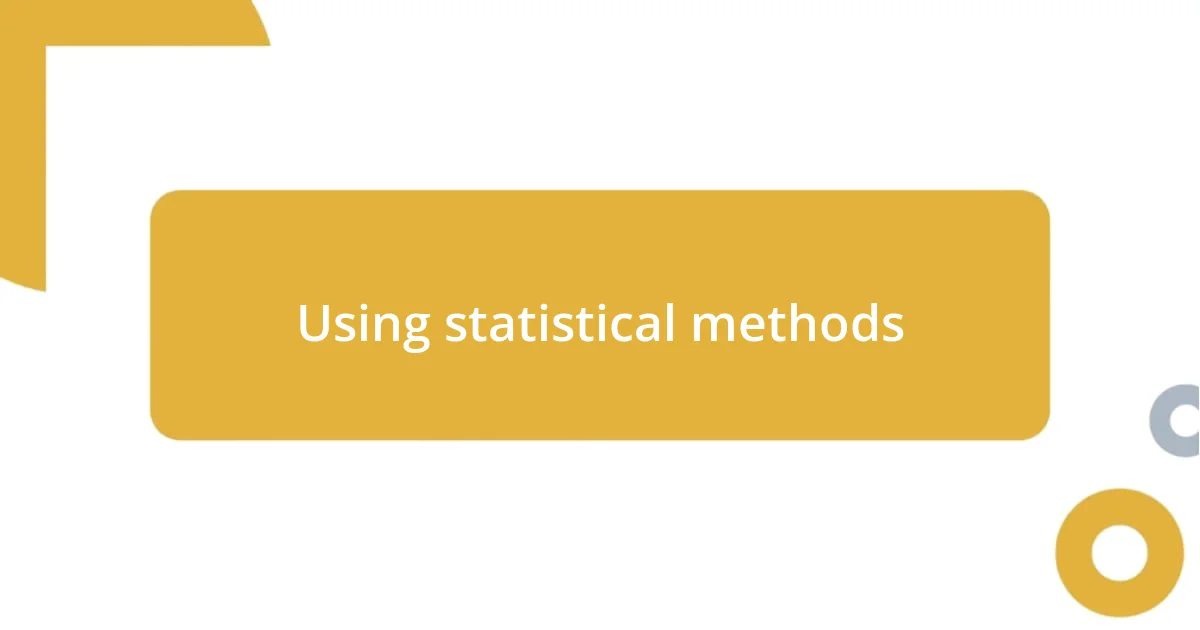
Using statistical methods
Using statistical methods in evaluating treatment efficacy is crucial because it allows for an objective analysis of clinical data. I vividly recall analyzing results from a study where p-values and confidence intervals transformed my perception of a treatment’s success. The robust statistics revealed that while the average patient had a positive response, significant outliers existed—patients for whom the treatment didn’t work at all. When you think about it, doesn’t that highlight the importance of digging deeper into the numbers?
A memorable experience involved the utilization of regression analysis to determine factors impacting treatment outcomes. I once extracted data on various patient characteristics and found that certain lifestyle choices dramatically influenced results. This analysis didn’t just provide insights; it prompted me to advocate for personalized intervention strategies focusing on those specific factors. Have you experienced how data can reveal surprising connections that directly inform patient care?
Statistical methods also play a fundamental role in recognizing trends over time. For instance, during a longitudinal study, I noticed a persistent decline in efficacy after the first year of treatment in some patients. That led to discussions about potential adjustments in dosage or treatment protocols. It’s fascinating to think how the right statistical tools can help us not only evaluate treatments but also adapt them for better patient outcomes. Isn’t it empowering to know that numbers can guide us to improved care?
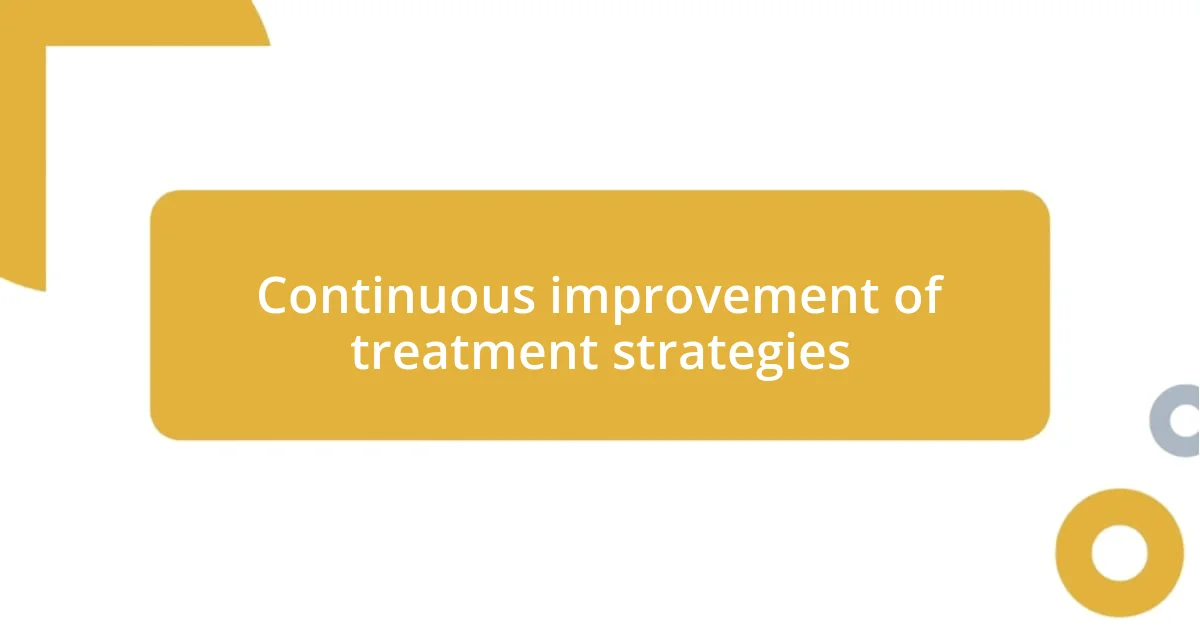
Continuous improvement of treatment strategies
When I think about continuous improvement in treatment strategies, I often reflect on a case where we implemented small, iterative changes based on direct observations. A colleague noticed that patients frequently had issues with the timing of their medication, which in turn affected adherence. After we adjusted our approach to include more accessible dosing schedules, I witnessed a significant uptick in patient satisfaction and engagement. It made me consider, how often do we overlook the simple adjustments that can create profound changes in care?
In another instance, I participated in a multidisciplinary review where we examined treatment outcomes alongside holistically designed support systems. A patient shared how peer support made a difference in their treatment adherence, opening my eyes to the value of integrating such resources into the treatment plans. This experience reinforced the idea that enhancing treatment strategies isn’t just about protocols; it’s about enriching the patient experience. Have you ever encountered a moment that made you rethink how you approach patient care?
Continuous improvement is also about creating a culture of adaptability within treatment teams. I recall leading a workshop where we discussed the challenges of maintaining consistency in care while integrating the latest research findings. The lively debates that ensued sparked a collective commitment to not only stay current but to also welcome patient insights into our discussions. It truly highlighted how a feedback-rich environment can be the catalyst for ongoing evolution in treatment approaches. Isn’t it remarkable how collaboration can energize our pursuit of better care?










